When it comes to weightlifting, whether you're a seasoned pro or just beginning your fitness journey, choosing the right equipment is crucial for optimizing your performance and safety. One of the most common questions that arises for strength enthusiasts is: Olympic Barbell vs. Standard Barbell—what's the difference, and which one should you choose?
In this blog post, we will break down the key features, pros, and cons of both the Olympic barbell and the standard barbell, helping you make an informed decision. This comparison is not only beneficial for your workout but also crucial for selecting the right equipment for your home gym or commercial fitness center.
What’s the Difference Between Olympic and Standard Barbells?
Before diving into the pros and cons of each type of barbell, let's take a look at the fundamental differences:
Olympic Barbell:
- Weight: Typically weighs 20 kg (44 lbs) for men and 15 kg (33 lbs) for women.
- Length: Usually 7 feet (2.2 meters).
- Diameter: The grip diameter is around 28 mm (1.1 inches).
- Sleeve Rotation: Olympic barbells feature rotating sleeves, which are key for Olympic lifting movements like the clean and jerk or snatch.
- Load Capacity: Can handle higher weights, often upwards of 1000 lbs or more.
Standard Barbell:
- Weight: Varies but typically weighs around 15 kg (35 lbs) or less.
- Length: Usually 5 to 6 feet (1.5 to 1.8 meters).
- Diameter: Smaller grip diameter of around 25 mm (1 inch).
- Sleeve Rotation: Standard barbells generally lack rotating sleeves.
- Load Capacity: Has a lower weight capacity, typically around 300-500 lbs.
Now that you understand the basic differences, let's dig deeper into their pros and cons to help you make a more informed choice.
Pros and Cons of Olympic Barbells
Pros of Olympic Barbells:
Superior Durability
Olympic barbells are built for heavy loads and extreme durability. Their construction is designed to withstand high-impact drops, making them a favorite in competitive weightlifting and powerlifting. If you're looking for a barbell that can handle years of abuse, an Olympic barbell is a top-tier option.
High Weight Capacity
These barbells are capable of handling heavy weights (typically over 1000 lbs), making them ideal for serious strength athletes who need to load up their barbell with massive weight plates. If you’re looking to push your limits with heavy lifts, this is the type of barbell you need
Versatility
Olympic barbells can be used for a wide variety of lifting styles, including Olympic lifts, powerlifting, bodybuilding, and general fitness training. This makes them a great all-rounder for those who want to perform a range of exercises, from squats to deadlifts to overhead presses.
Cons of Olympic Barbells:
Higher Cost
Olympic barbells tend to be more expensive due to their higher-quality materials and design. If you’re on a budget or just starting out, this may not be the most cost-effective option. However, for those who plan on lifting heavy weights regularly, the investment is worthwhile in the long run.
Size and Storage
Olympic barbells are typically longer (7 feet) and heavier than standard barbells, which can be cumbersome to store and use in smaller spaces. If you’re setting up a home gym in a tight area, this might be a factor to consider.
Specialized Weight Plates
Since Olympic barbells have thicker sleeves and require specific plates, you can't use standard weight plates with them unless you have an adapter. This means you'll likely need to invest in a complete set of Olympic-sized plates, which can further increase the cost.
Pros and Cons of Standard Barbells
Pros of Standard Barbells:
Affordability
Standard barbells are more budget-friendly, especially when compared to their Olympic counterparts. If you're just getting into weightlifting and don’t need to load on excessive weight, the standard barbell offers excellent value without breaking the bank.
Compact Size
The shorter length of standard barbells (usually around 5 feet) makes them easier to store and maneuver in small spaces. This is a major advantage if you’re working with a limited workout area at home.
Compatible with Standard Plates
Standard barbells work with smaller weight plates (1-inch diameter hole), which are often more affordable and can be found in most gyms or fitness stores. If you already own standard plates, there's no need to invest in a new set.
Simplicity
If you’re focusing primarily on basic lifts like curls, bench presses, or squats, a standard barbell gets the job done without all the bells and whistles. There are fewer moving parts (no rotating sleeves), which means less potential for mechanical failure.
Cons of Standard Barbells:
- Lower Load Capacity
Standard barbells can only handle a limited amount of weight, usually between 300 and 500 lbs, which may be restrictive for experienced lifters aiming to increase their strength progressively.
Limited Versatility
Standard barbells aren't suited for advanced Olympic-style lifts due to the lack of rotating sleeves. If you're into powerlifting or Olympic weightlifting, this barbell might not be the best tool for the job.
Less Durability
While still sturdy, standard barbells are not built to withstand the high-impact drops that Olympic barbells can endure. Over time, the wear and tear from constant heavy use may degrade the barbell’s performance.
Which Barbell is Right for You?
Choosing Based on Your Fitness Goals:
- For Powerlifters and Olympic Lifters:
If your goal is to lift heavy weights with perfect form, or you're training for Olympic lifts, the Olympic barbell is the best choice. The rotating sleeves help prevent wrist and forearm strain, and the higher load capacity allows you to push your limits safely. For Casual Lifters or Those on a Budget:
If you're just starting your fitness journey or are only interested in basic lifts, a standard barbell will be more than sufficient. It’s a cost-effective option that provides a good workout experience without the need for advanced features like rotating sleeves.For Home Gyms:
If space is a concern, a standard barbell might be more practical due to its shorter length and lighter weight. However, if you have a spacious home gym and plan to perform more advanced lifting routines, an Olympic barbell will offer more long-term value.
Research & Sources
To provide readers with reliable insights, we’ve drawn from expert opinions, product specifications, and trusted sources in the fitness industry.
- According to Bodybuilding.com, Olympic barbells are favored for their durability and versatility, making them the top choice for athletes who lift heavy and often.
- The National Strength and Conditioning Association (NSCA) also recommends Olympic barbells for serious strength athletes, as their design reduces wrist strain during Olympic lifts and allows for higher weight loads.
- Additionally, industry leader Rogue Fitness emphasizes that Olympic barbells are built to handle intense lifting demands and will last for years without significant degradation.
These insights confirm that Olympic barbells are generally superior for advanced lifters or those in competitive settings, while standard barbells serve as a great choice for beginners or those focused on basic exercises.
Frequently Asked Questions (FAQs)
1. What’s the weight difference between an Olympic and standard barbell?
An Olympic barbell typically weighs around 20 kg (44 lbs) for men and 15 kg (33 lbs) for women, while standard barbells can vary but generally weigh less, typically around 15 kg (35 lbs).
2. Can I use standard weight plates with an Olympic barbell?
No, Olympic barbells require plates with a 2-inch hole (50 mm), while standard barbells use 1-inch hole plates. You’ll need adapters if you want to use standard plates with an Olympic barbell.
3. Are Olympic barbells suitable for home gyms?
Yes, Olympic barbells can be used in home gyms if you have enough space for the longer barbell. However, if your space is limited, a standard barbell might be a better option.
4. Is an Olympic barbell worth the investment?
If you plan on lifting heavy weights regularly, performing Olympic lifts, or training seriously, the investment in an Olympic barbell is well worth it for its durability, higher load capacity, and versatility.
Conclusion
Understanding the differences between an Olympic barbell vs. standard barbell is crucial when setting up your gym and choosing the right equipment for your fitness goals. While both barbells have their own set of benefits, your choice should be based on your specific needs, whether it’s the advanced capabilities of an Olympic barbell or the affordability and simplicity of a standard barbell.
If you're looking for premium quality barbells, Hamilton Home Fitness offers a wide range of top-notch equipment that caters to both casual and serious lifters. Check out their offerings on their website: Hamilton Home Fitness.
Remember, no matter which barbell you choose, the most important thing is to stay consistent with your training and push your limits safely!





